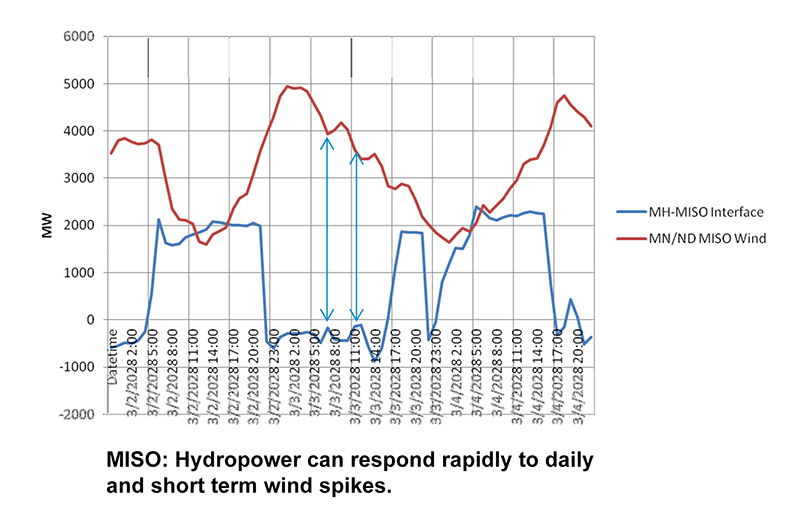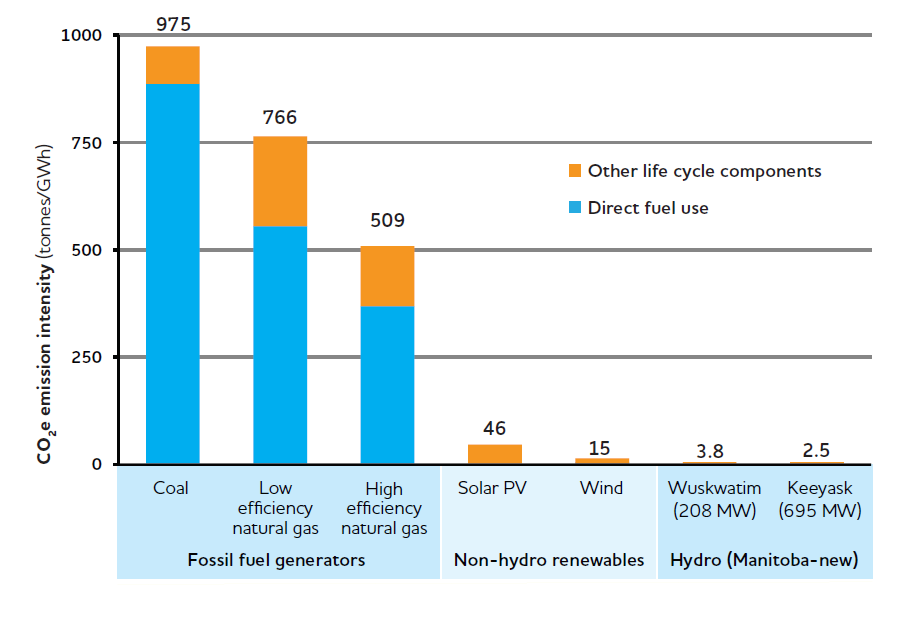Reducing emissions
Renewable hydroelectric power from Manitoba continues to play a critical role in meeting U.S. greenhouse gas (GHG) reduction goals.
Studies show that life cycle GHG emissions from hydropower are comparable to other renewable power generation such as wind and insignificant relative to those of conventional thermal generating stations.
For example, our new Keeyask Generating Station will result in fewer GHG emissions over a century of operation than an equivalent natural-gas fired station would release in half a year or a coal-fired facility in less than 100 days.
For our U.S. customers, hydropower from Manitoba helps reduce reliance on higher emitting fossil fuels. From 2006–2020, imports of hydropower from Manitoba to U.S. utilities helped to reduce GHG emissions in the U.S. Midwest by over 100 million tonnes.
Helping U.S. renewables
Hydropower from Manitoba supports the development of intermittent renewable energy sources like wind and solar.
Hydropower can quickly adjust to variability in wind generation. When U.S. wind generation is available, our hydropower stations can ramp down output. When less U.S. wind is available, we can rapidly ramp up generation and send renewable hydropower to the grid.
As a result, hydropower is the perfect complement to intermittent output from regional wind farms. A 2013 MISO Wind Synergy (PDF, 5.4 MB) study identified a number of benefits to incorporating hydroelectric facilities located in Manitoba with current and planned wind generation:
- Production cost savings to U.S. utilities of $227 to $4,545 million per year.
- The potential to provide weighted average load cost savings in the U.S. Midwest of $430 million annually.
- A reduction in wind curtailment in the northern MISO region by 50 to 100 gigawatt hours (depending on the scenario being modelled).
Comparison of GHG emissions
Life cycle analyses of GHG emissions from our newest generating stations were conducted by the independent, non-profit Pembina Institute. The emission sources considered were not just the emissions associated with direct fuel use to generate power but also with:
- the manufacture and transportation of materials/components;
- fuel use during construction;
- land-use change;
- eventual decommissioning.
Studies like these show that life cycle GHG emissions from hydroelectricity are comparable to other forms of renewable power generation, such as wind, and insignificant relative to those of conventional thermal generating stations.


